
How Audience Impacts Email Marketing Performance
What factors influence the performance of your marketing emails?
Some of the most obvious answers include email content and offers, subject line, send time and level of relevance to each recipient — all of which are factors you can control.
But some factors that influence email performance are not entirely within your control.
Consider the case of your audience. While you can build a targeted audience, certain types of shoppers are more likely to engage than others based on their relationship with your brand — and that relationship is only something you can influence, not something you can control.
Not All Customers Are Equal
Each shopper’s individual profile, including how much they typically spend with your brand, their purchase history and their customer lifecycle stage, makes an enormous difference when it comes to email engagement.
Understanding that shoppers will engage differently based on their relationship with your brand is an important first step. From there, you can map your distribution of customers based on these characteristics to:
- Deliver more relevant marketing messages: Send targeted content and offers based on shoppers’ relationship with your brand.
- Increase email performance: Drive engagement with emails and boost conversions by sending more relevant content and offers to targeted audiences and prioritizing your most valuable groups of customers.
- Improve your ability to benchmark performance: Accurately determine how the performance of your targeted emails compares to industry averages based on an understanding that different types of shoppers will engage differently (e.g. the benchmark click rate for lost shoppers is lower than the benchmark click rate for at-risk shoppers).
3 Audience Splits that Impact Email Marketing Performance
In evaluating the various ways that you can split your audience based on shoppers’ relationship with your brand, three cuts in particular stand out for their impact on email marketing performance. Here’s what you need to know.
1) Spend Level
Every brand has three different types of customers: Low spenders, average spenders and high spenders.
Critically, spend level doesn’t necessarily correlate with lifetime value. For instance, a low spender might purchase more frequently than a high spender, negating any differences in lifetime value. This would be the case when comparing a low spender who makes a $50 purchase every month and a high spender who makes a $300 purchase every six months.
Nevertheless, a correlation does exist between spend level and email engagement for retailers of all kinds: The more shoppers spend, the more likely they are to engage with emails. This pattern of engagement indicates a level of loyalty associated with spend, as the more shoppers spend with a brand, the stronger connection they are likely to feel.
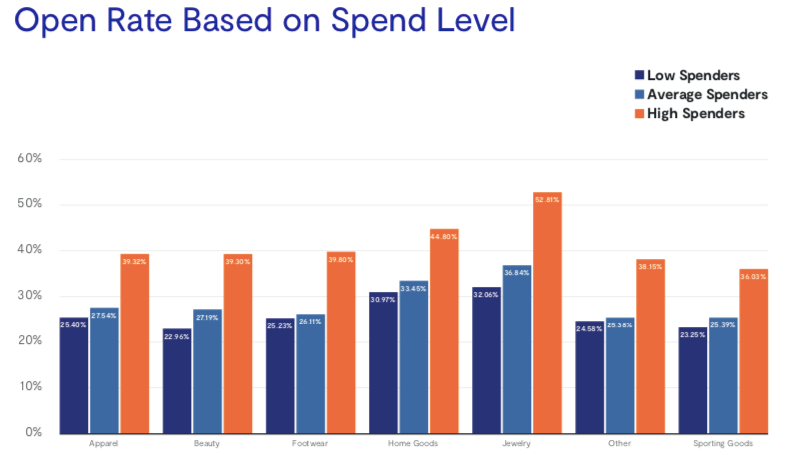
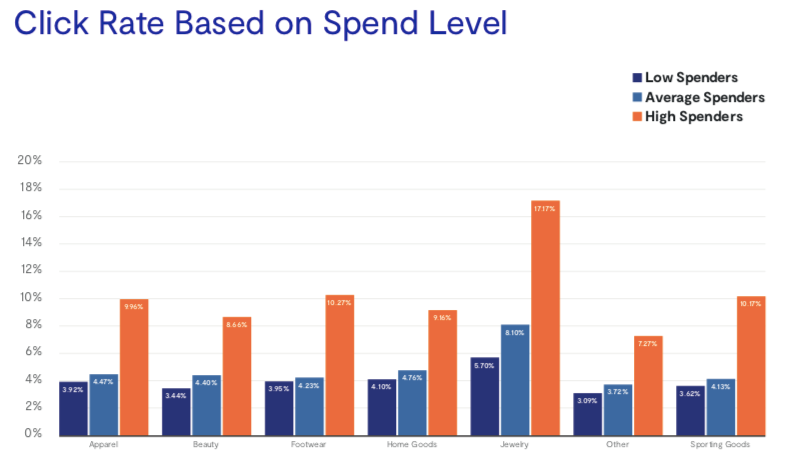
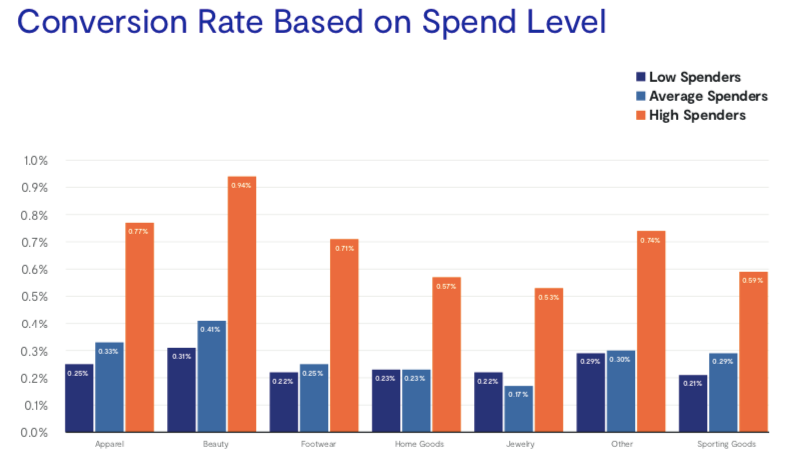
2) Purchase History
Understanding your distribution of customers based on purchase history is critical because purchase history correlates to lifetime value and loyalty. Specifically, the more times customers buy from your brand, the more likely they are to buy again, leading to increased lifetime value and loyalty.
Notably, the loyalty that comes with making more purchases also manifests itself in email engagement. Looking at non, one-time and multi-time buyers, open and click rates do not reveal much differentiation. This pattern indicates that each of these groups has a similar base level of interest in viewing products.
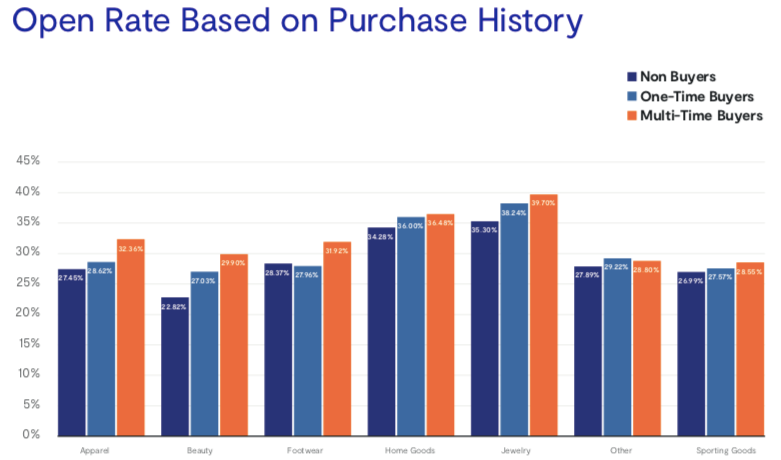
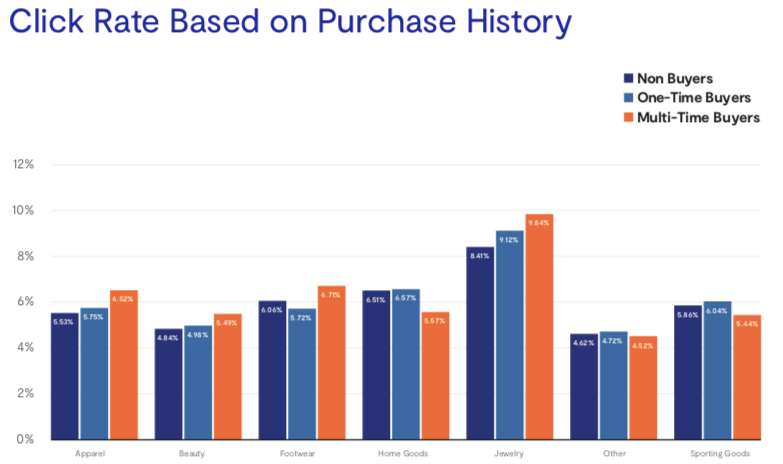
However, these groups engage much differently when looking at conversion rates, with the average conversion rate for multi-time buyers much higher compared to both other groups. This shift reveals that shoppers’ past purchase history impacts whether their interest in viewing products (as demonstrated by opening and clicking on emails) leans more toward curiosity or true purchase intent.
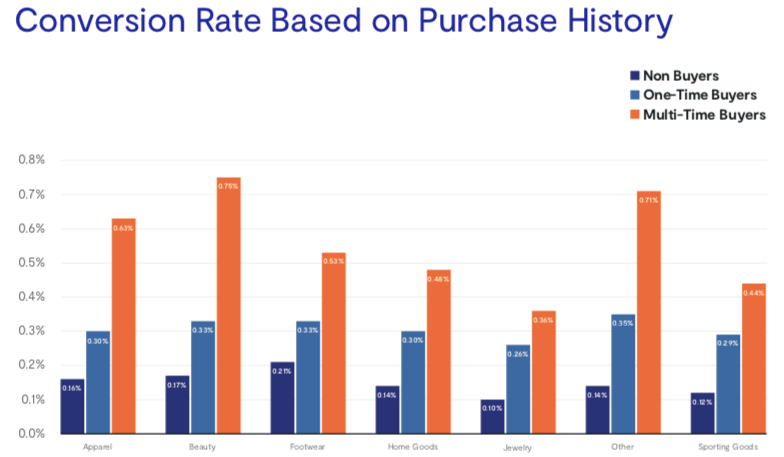
3) Lifecycle Stage
Splitting shoppers into audiences based on lifecycle stage (active, at-risk, lost and non buyers) allows you to add value based on unique needs. For instance, you can save at-risk shoppers with “come back” messaging and offers or keep active buyers in their normal buying cycle with strategically timed recommendations.
For this split to be effective though, you need to use a predictive lifecycle model that captures each shopper’s unique buying cadence rather than using a static benchmark that won’t apply to everyone.
Not surprisingly, active buyers are most likely to engage with emails for all retail verticals. But even though non buyers are more likely to open and click on emails than past buyers that are at-risk or lost, once those at-risk and lost customers do click on emails, they are more likely to convert. The trend of at-risk and lost buyers converting at higher rates than non buyers occurs because it is easier to retain customers than it is to acquire new ones.
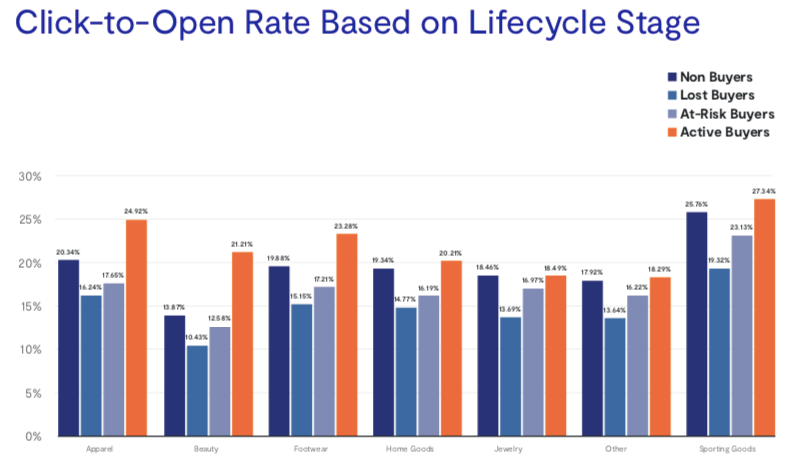
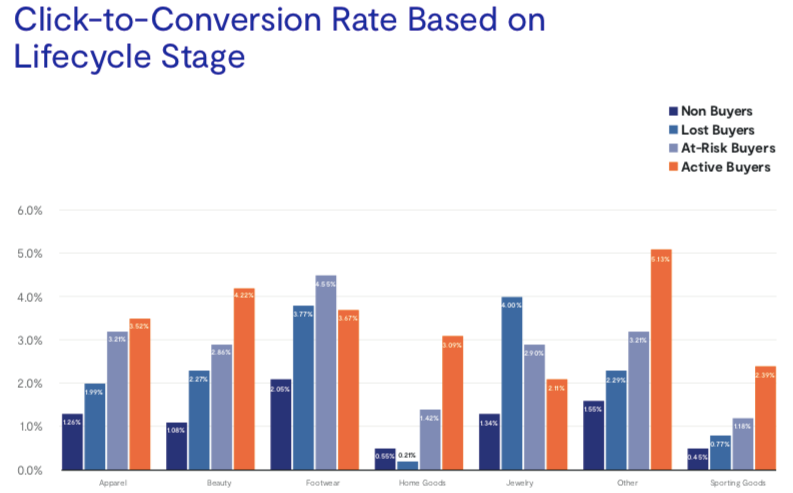
Benchmarking How Your Audiences Impact Email Marketing Performance
As you develop different audiences based on shoppers’ relationship with your brand, how do you know what to expect from each group? Download Bluecore’s 2019 Retail Email Benchmark Report to get the email benchmarks you need to measure the performance of emails in a variety of circumstances, including those sent to targeted audiences.






